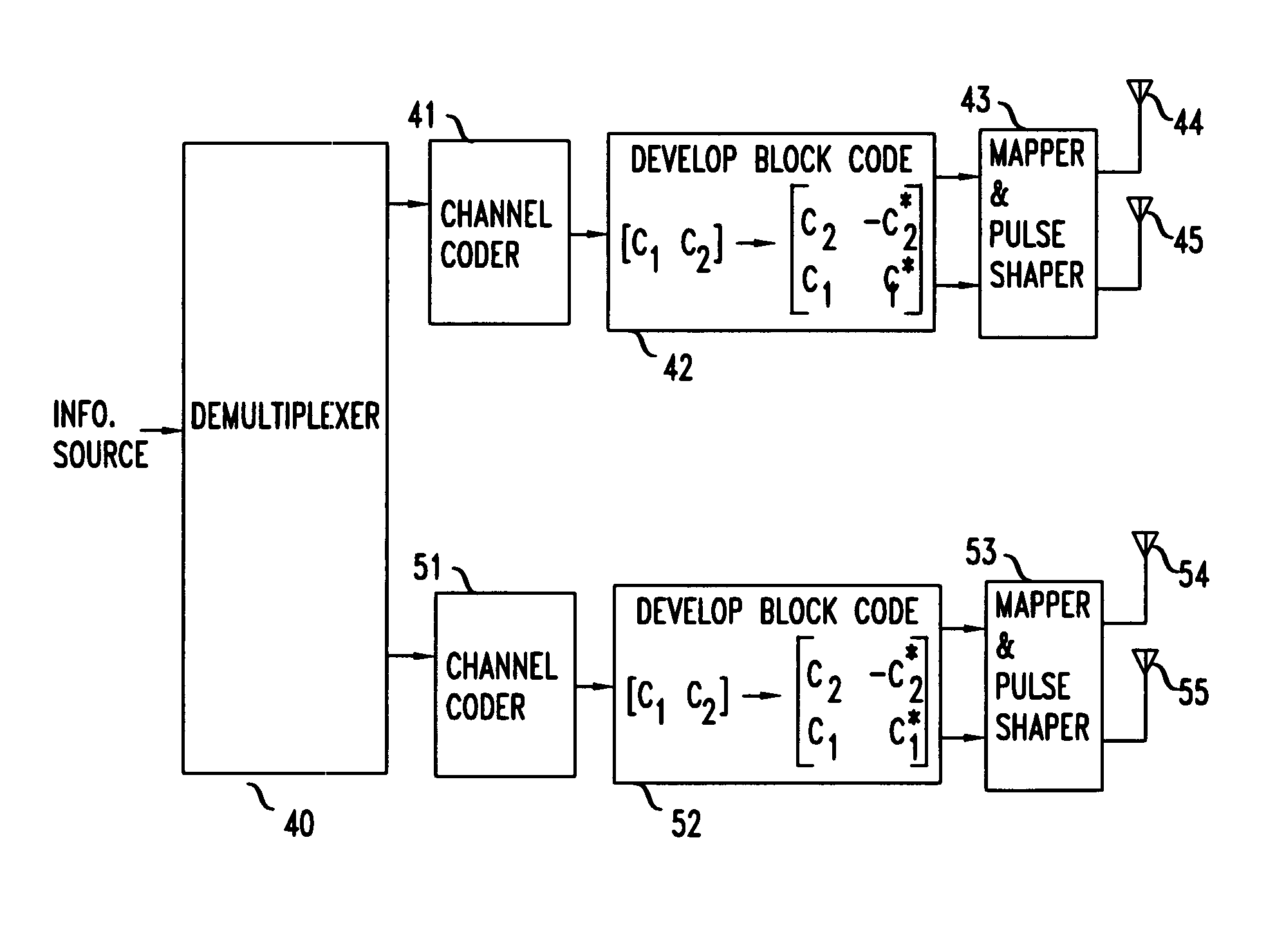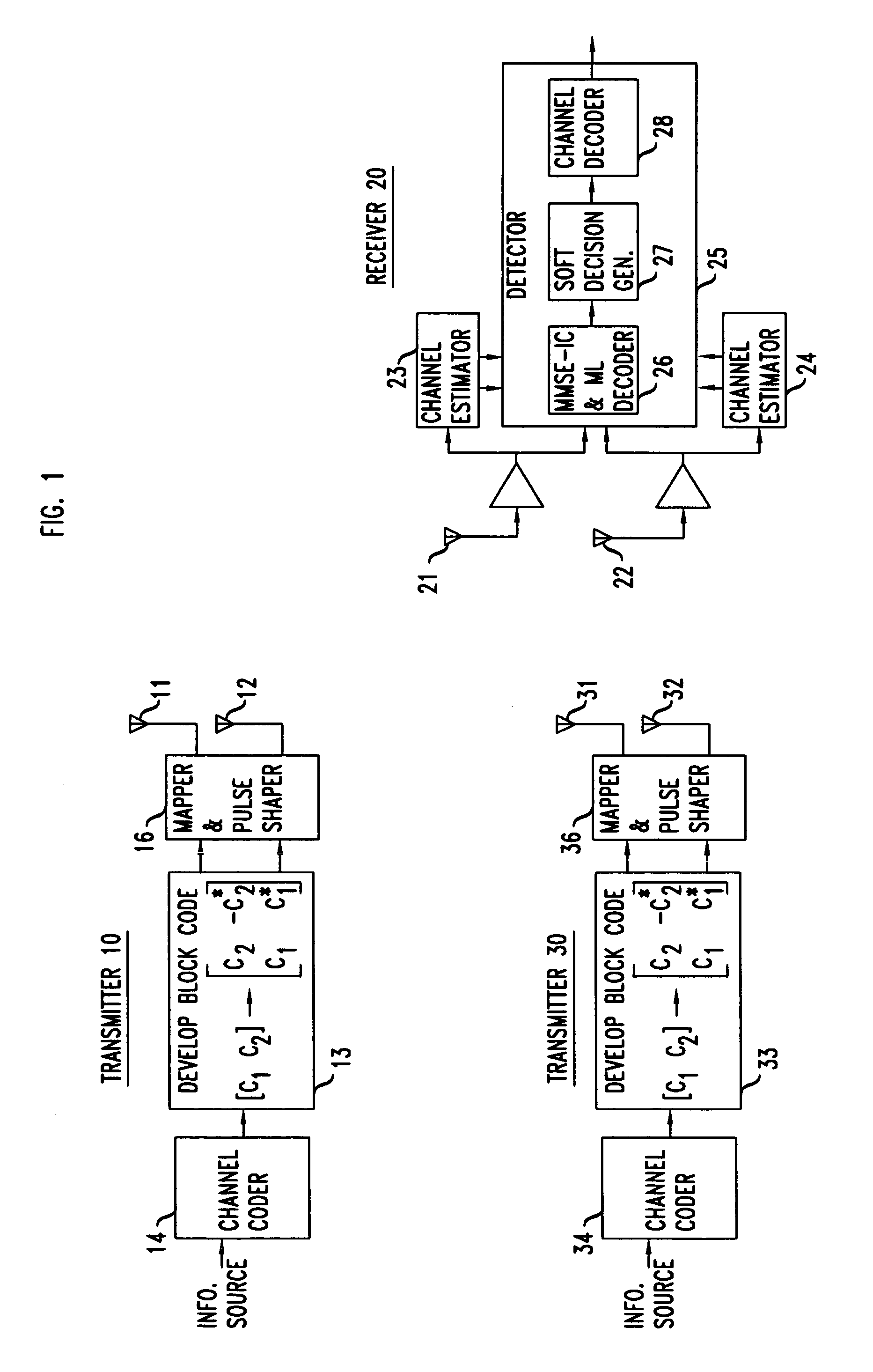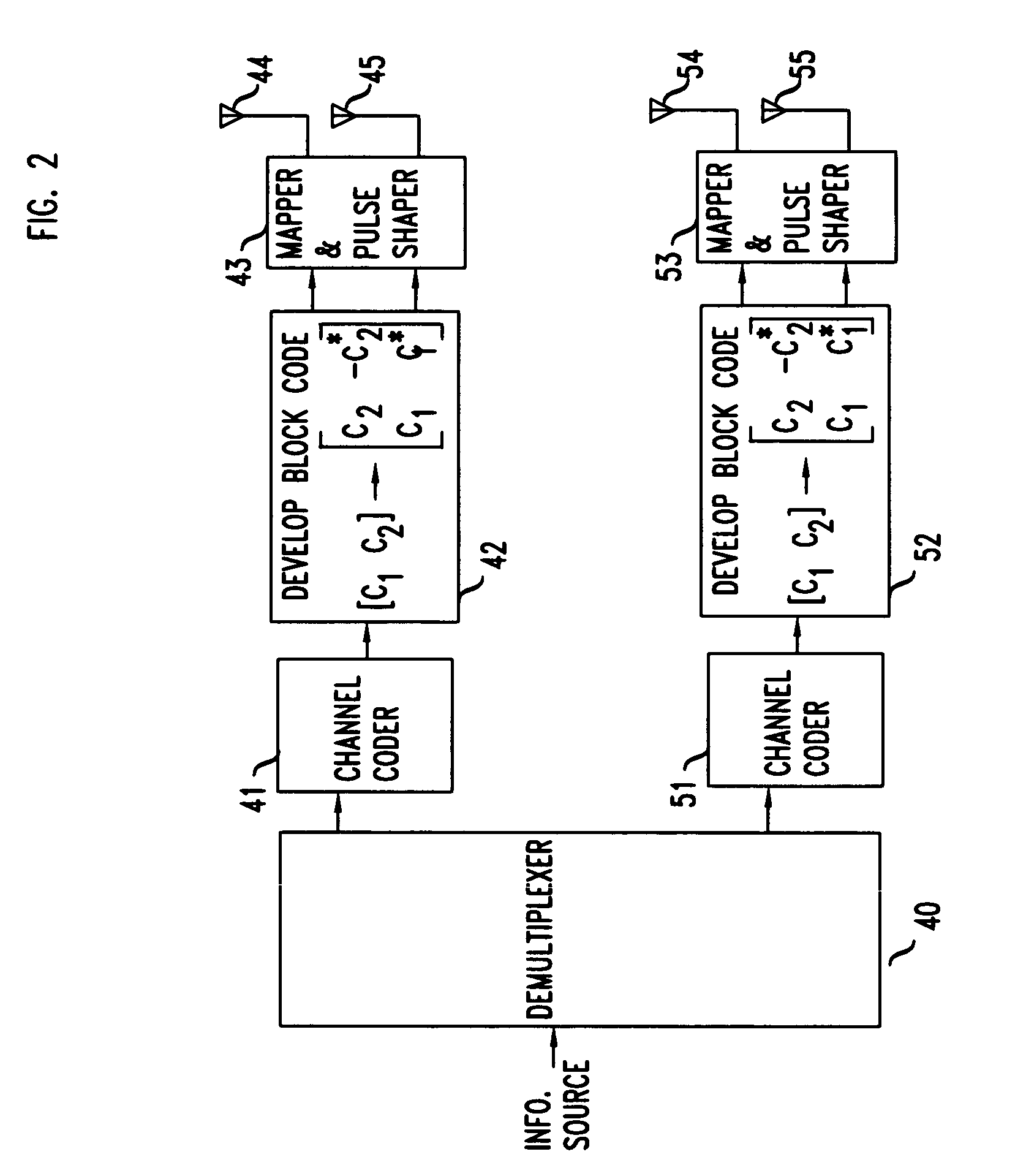Combined channel coding and space-time block coding in a multi-antenna arrangement
a technology of combined channel coding and space-time block coding, applied in the field of wireless communication, can solve the problems of limited system capacity, power limitation, size and speed of devices employed in portable wireless devices, and physical limitations of wireless channels, so as to improve performance, increase system capacity, and improve performan
- Summary
- Abstract
- Description
- Claims
- Application Information
AI Technical Summary
Benefits of technology
Problems solved by technology
Method used
Image
Examples
Embodiment Construction
[0019]FIG. 1 illustrates a unit 10 that employs a space-time block coding unit 13 that is followed by a conventional constellation mapper and pulse shaping circuit 16. The output of circuit 16 is fed to two transmitting antennas 11 and 12. The input symbols to the space-time block encoder are divided into groups of two symbols each, and at a given symbol period, the two symbols in each group {c1, c2} are transmitted simultaneously from the two antennas. The signal transmitted from antenna 11 is c1 and the signal transmitted from antenna 12 is c2. In the next symbol period, the signal −c2* is transmitted from antenna 11 and the signal c1* is transmitted from antenna 12.
[0020]In receiver 20, signals are received by antennas 21 and 22 and are applied to detector 25. Channel estimators 23 and 24 operate on the incoming signal of antennas 21 and 24, respectively, in a conventional manner to develop estimates of the channel parameters. Those estimates are applied to detector 25. In the ma...
PUM
 Login to View More
Login to View More Abstract
Description
Claims
Application Information
 Login to View More
Login to View More - R&D
- Intellectual Property
- Life Sciences
- Materials
- Tech Scout
- Unparalleled Data Quality
- Higher Quality Content
- 60% Fewer Hallucinations
Browse by: Latest US Patents, China's latest patents, Technical Efficacy Thesaurus, Application Domain, Technology Topic, Popular Technical Reports.
© 2025 PatSnap. All rights reserved.Legal|Privacy policy|Modern Slavery Act Transparency Statement|Sitemap|About US| Contact US: help@patsnap.com



